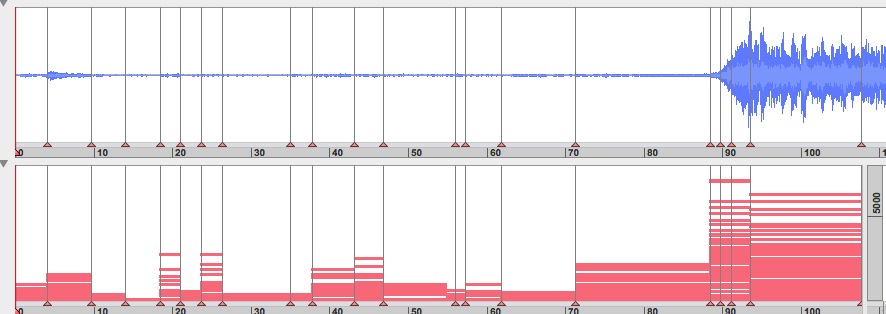Hi MUS3
sorry for the slight delay, I was busy with other things.
indeed the reply is the same as in the other thread. But in case of chord sequence analysis, where partial parameters are fixed the resynth
formula is simpler:
s(n) = A sin(2 pi F/R + P)
that is the amplitude of your analysis is A, the frequency F, R is again the sample rate, and P is the phase.
I read it but not exactly understood the relation betw. dB and AudioSculpt exported values.
The db slider filters partials with amplitude below xx db (-77 in your case)
To convert the A parameter you get into db you can use this formula
A_dB = 20*log10(A)
or the other way around
10^(A_dB/20) = A
For your setup with amplitude filter set to -77dB spectral peaks having amplitude smaller than
-77dB = 0.0001412537 will not be taken into account. This limits the amplitudes you will have in your result, but according to the settings
you use for the partial analysis.
If you really used -77db as filter in your analysis then your results seem to contain amplitude values slightly below the limit.
I don’t understand exactly how you did your analysis, so I don’t see where this comes from. If this disturbes you please send me your sound and the command line that you find in the AS command window, so that I can see what is the reason.
Best
Axel



